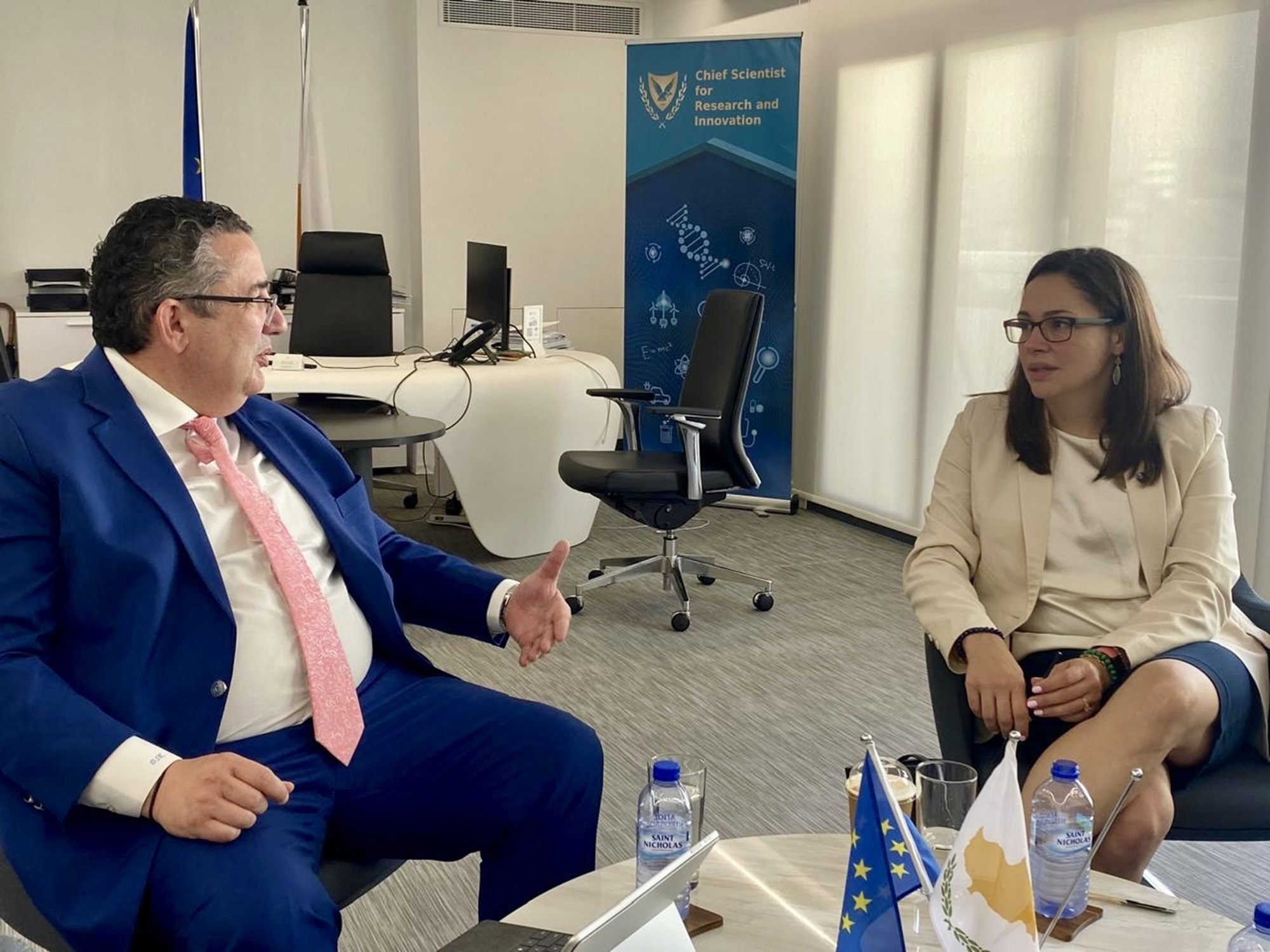Cyprus’ chief scientist for the deputy ministry of research Demetris Skourides on Tuesday met Nasa scientist Alexandra Lockwood ahead of her presentation of the latest findings from the James Webb Space Telescope (JWST) in Nicosia on Wednesday.
During the meeting, Skourides presented Cyprus’ plans concerning research and innovation, with a focus on the country’s space strategy 2022-2027.
He stressed that Cyprus’ geographical location “is advantageous for the further development of its space sector, which currently includes around 50 entities, including 33 companies involved in robotics, earth observation, and navigation systems”.
Skourides highlighted key organisations with significant infrastructure, such as the ‘Eratosathenes’ Research Centre of Excellence, which focuses on earth observation and environmental impact, and the Cyprus Space Exploration Organisation (CSEO), which works on space engineering, micro-satellite production and solar storm modelling.
“Since 2016, the Research and Innovation Foundation (Idek) has funded 36 projects with a total of €17 million from national funds, reflecting a commitment to enhance earth and atmospheric observation, satellite communications, radiofrequency radiation, and geoinformatics,” Skourides said.
Skourides also mentioned the EU initiative ‘Horizon Europe’, noting the participation of five Cypriot companies with a total funding of €2.1 million in areas such as IT, robotics, earth observation and navigation systems.
Lockwood’s presentation on Wednesday was organised by the Cyprus Space Exploration Organisation (CSEO) and will be held at its Space Research Centre at 6.30pm.
CSEO president George Danos said Lockwood’s visit will shed light on recent Nasa discoveries and the potential for life beyond Earth.
“We are excited that Dr Lockwood will share the latest news from the James Webb Space Telescope (JWST), including its findings about life beyond Earth,” Danos said.
Lockwood, a project scientist for Nasa’s JWST at the Space Telescope Science Institute in Baltimore, is currently serving as the strategic messaging and engagement lead for Nasa’s Science Mission Directorate.
Her visit to Cyprus was organised by the US embassy in Nicosia and the US department of state’s educational and cultural affairs bureau.
Speaking to the Cyprus News Agency (CNA), Danos reminisced about the global excitement when the first images from the JWST were released two years ago.
“We eagerly anticipated the stunning images of the Carina Nebula, 7,000 light-years away, marking a new era in astronomy,” he said. “It was a huge honour for the CSEO to simulcast those first images, as it was a significant moment for Cyprus.”
Ahead of her visit, in an interview with the CNA, Lockwood stressed the JWST’s contributions to our understanding of the universe, highlighting the telescope’s role in identifying the farthest galaxies, discovering atmospheres on rocky exoplanets, and providing new insights into star and planet formation.
“The Webb Telescope, with its large mirrors and sensitive infrared instruments, enables astronomers to understand the chemical compositions of new objects,” she said.
Regarding future milestones, she expressed excitement about Nasa’s blend of science and exploration.
“As we will likely return humans to the Moon and progressively collaborate with industry figureheads, we will learn new things about our solar system and ourselves as a species.”
She also said that ongoing efforts across various science disciplines are aiming to detect signs of life and relate them to our experiences on Earth.
“The discoveries in the next decade and beyond will offer a new perspective on our universe,” Lockwood concluded.







Click here to change your cookie preferences